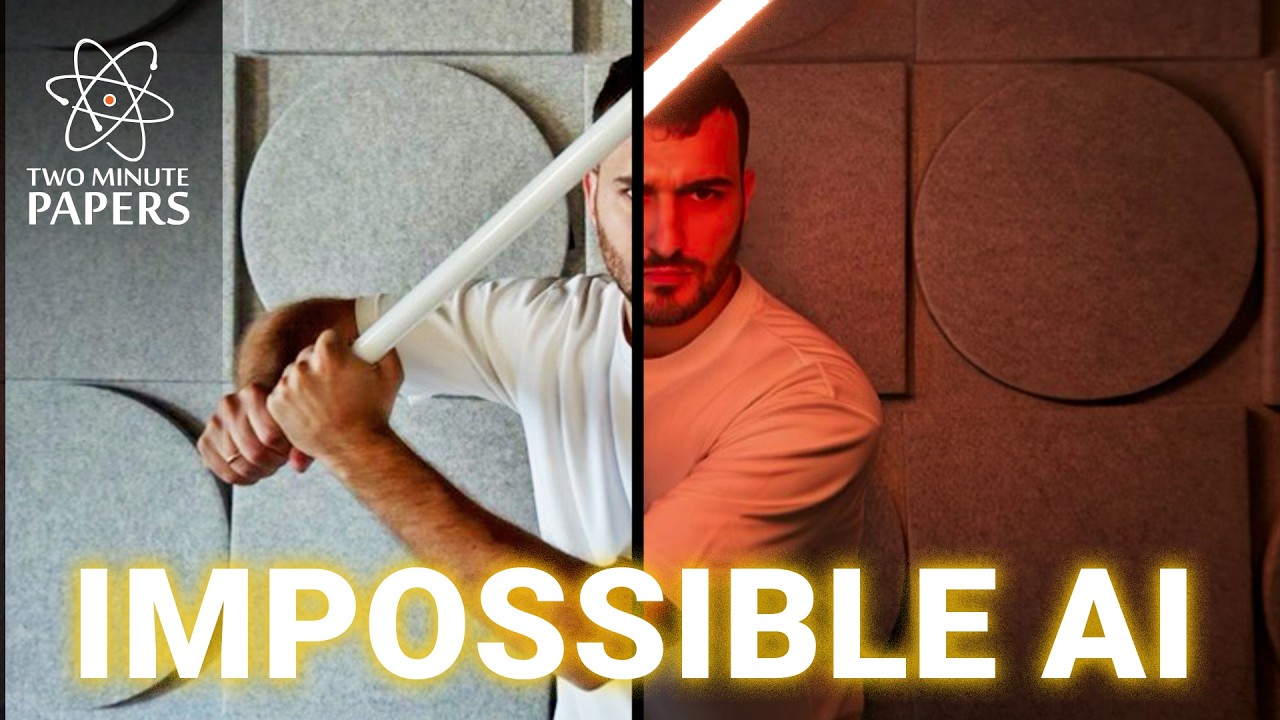Google has developed a groundbreaking AI that allows users to realistically manipulate individual lights in photos—turning them on or off, changing colors, and adjusting shadows and reflections—by learning the physics of light transport from a combination of real and synthetic data. This innovative approach bypasses the need for full 3D scene reconstruction, enabling advanced, physically plausible lighting edits in just seconds and demonstrating impressive versatility across various image types.
The video introduces a groundbreaking AI technology developed by Google that revolutionizes photo editing by addressing a major limitation in traditional tools like Photoshop. Unlike conventional methods that only allow simple brightness adjustments, this AI enables users to turn individual lights in a photo on or off, change their colors, and manipulate shadows and reflections with remarkable realism. The system accurately follows the physics of light transport, making edits such as switching off sunlight or turning on lamps appear natural and physically plausible, all within just five seconds per image.
What sets this AI apart is its ability to handle complex lighting effects, including reflections on glass and metals, and even adding invisible point lights that interact realistically with the scene. It can push lighting intensity beyond its training range and works effectively on stylized or out-of-domain images, such as cartoons, demonstrating impressive versatility. This capability is likened to having a dimmer switch that can be cranked beyond 100% without losing realism, showcasing the AI’s advanced understanding of light behavior.
The training process behind this AI is a clever combination of real and synthetic data. Researchers used a small set of real photo pairs with lights on and off to teach the model about real-world camera and lighting characteristics. Alongside this, they employed a massive dataset of over 600,000 synthetic images rendered from 3D models to help the AI learn the complex rules of shadows, reflections, and light interactions. This hybrid approach grounds the AI in reality while giving it a deep “education” in the physics of light, enabling it to produce highly plausible edits without needing to reconstruct the 3D scene.
This approach sidesteps the traditionally impossible task of building a full 3D model from a single 2D image, which would require guessing geometry, textures, and materials. Instead, the AI learns the linear properties of light transport directly from pixels, allowing it to add or subtract lighting effects mathematically. This linearity is crucial because it means the AI can isolate the contribution of individual lights by subtracting images with lights on and off, a technique that underpins the system’s success. The video highlights the elegance and novelty of this method, emphasizing how it leverages fundamental physics to achieve results that were previously unattainable.
Finally, the video celebrates the young lead author behind this innovative work, a Master’s student named Nadav, praising his talent and contribution to the field. The presenter expresses excitement about the technology’s potential and encourages viewers to engage with the content to spread awareness of this remarkable advancement. Overall, the video showcases a significant leap forward in AI-driven photo editing, blending physics, machine learning, and creativity to transform how we interact with images.
